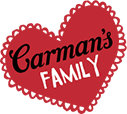The Facts on FODMAPS…
So, what are FODMAPs?
The word FODMAPs is an acronym for Fermentable Oligosaccharides, Disaccharides, Monosaccharides and Polyols. These are sugars that are found in food, which can be either poorly absorbed or indigestible in the small intestine. Due to this poor absorption in the small intestine, the sugars make their way along the digestive tract to the large intestine where they act as a food source for the bacteria that live in our large intestine. These bacteria then ferment these sugars (FODMAPs) and can cause symptoms of Irritable Bowel Syndrome (IBS) in some people, including diarrhoea, constipation, abdominal bloating/distension, abdominal pain and excess wind.
What foods are FODMAPs found in?
- Fermentable
- Oligosaccharides – Fructans and Galacto-oligosaccharides (GOS)
- Disaccharides – Lactose
- Monosaccharides – Excess Fructose
- And
- Polyols – such as Sorbitol, Mannitol, Maltitol
Some examples of food sources high in each of the FODMAPs are listed below. Please note this list is not complete. For a complete list please refer to the Monash University Low FODMAP DietTM app, where you will also find all of Carman’s Low FODMAP certified products.
- Excess Fructose: Honey, apples, mango, pear, watermelon, high fructose corn syrup
- Fructans: Wheat, rye, barley, onion, garlic, shallots, leek
- Lactose: Milk, yoghurt, ice cream, soft cheeses
- Galacto-Oligosaccharides (GOS): Legumes (e.g. lentils and chickpeas)
- Polyols: Apples, apricots, nectarines, pears, plums, prunes, mushrooms
What is the low FODMAP diet?
The Low FODMAP Diet provides symptom relief in ~75% of IBS patients and is now accepted and recommended as one of the most effective dietary therapies for IBS.
The low FODMAP diet has two phases:
Phase 1 – Restrictive Phase
The first phase of the Low FODMAP Diet typically involves strict restriction of all high FODMAP foods for 4-6 weeks with close monitoring of symptoms.
Phase 2 – Re-introduction Phase
The second phase is where the foods that were restricted in the first phase are systematically reintroduced and challenged in the diet. This determines which of the FODMAPs are problematic and the person’s individual tolerance limit to each of the FODMAPs, to establish a longer-term diet that is lower in the problematic FODMAPs for the individual than were originally consumed, but less restrictive than the first phase of the diet.
It is important to note it is a low FODMAP, not a FODMAP free diet. Removing all FODMAP foods from your diet over the long term is not recommended for several reasons, including the prebiotic effect that FODMAP foods provide and to prevent unnecessary dietary restriction.
Where can I get further information ?
More information can be found at the Monash University FODMAP site. The diagnosis of IBS should be made by a medical practitioner, so if anyone is experiencing these types of symptoms they should see their doctor. To follow a low FODMAP diet, it is recommended that you consult with an experienced dietitian in this area, as food intolerances affect everyone differently and require individualised treatment. To help you find a dietitian in your area please visit this site.
Here at Carman’s, we know the importance of digestive health and offer a selection of Monash University Low FODMAP CertifiedTM products:
Super Berry Muesli
Super Berry Muesli Bars
Original Fruit Free Muesli
Original Fruit Free Muesli Bars




